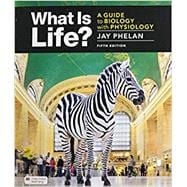Available for the first time with Macmillans new online learning tool, Achieve, What Is Life? teaches students to ask the questions they need to understand how biology plays out in their daily lives. The rigorously updated 5th edition brings forward the features that made the book a classroom favorite (chapters anchored to intriguing questions about life, spectacular original illustrations, innovative learning tools) with a more focused and flexible presentation, enhanced art, and full integration with Achieve, Macmillan’s new online learning system.
Achieve supports educators and students throughout the full range of instruction, including assets suitable for pre-class preparation, in-class active learning, and post-class study and assessment. The pairing of a powerful new platform with outstanding biology content provides an unrivaled learning experience.









